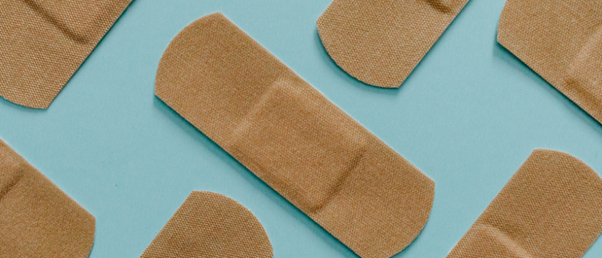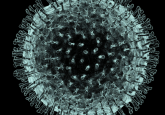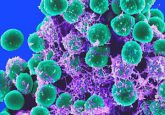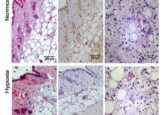Color-changing wound dressing detects infection

A wound dressing made from a nanocellulose mesh detects early signs of infection in skin wounds by monitoring pH.
A nanocellulose-based wound dressing has been developed by researchers at Linköping University in collaboration with researchers at Örebro and Luleå Universities (all Sweden) that changes color if the wound becomes infected. This dressing would circumvent the current need for dressings to be replaced every couple of days so health practitioners can check for infection, a step that can disrupt the healing process and increase the risk of infection. This new dressing would instead be left on the damaged site for the duration of the healing process.
“Being able to see instantly whether a wound has become infected, without having to lift the dressing, opens up for a new type of wound care that can lead to more efficient care and improve life for patients with hard-to-heal wounds,” explained Daniel Aili, the senior author of the study (Linköping University).
Their dressing is made from a tight mesh of nanocellulose that prevents bacteria and other microbes from entering the wound, while also ensuring gases and liquid can pass, which is important to the wound-healing process.
 An injectable hydrogel could treat infections following hip replacement surgeries
An injectable hydrogel could treat infections following hip replacement surgeries
An antibacterial hydrogel shows promise as a new minimally invasive treatment option for soft tissue infections around prostheses.
The researchers capitalized on the pH change that occurs in an infected wound to create their color-changing dressing. A non-infected wound has a pH of around 5.5, which becomes basic when infected and results in a pH of 8 or more. This occurs because bacteria optimize the conditions of their surrounding environment, and this change in pH can be detected before other signs of infection occur, such as pus, soreness or redness.
The color-changing abilities of the dressing are due to the addition of bromothymol blue, BTB, which is a dye that changes from yellow to blue when the pH exceeds 7. The researchers loaded BTB into a silica material with nano-sized pores, which is combined with the nanocellulose dressing material. The resulting dressing turns from yellow to blue if the wound becomes infected.
Detecting infections in their early stages could mean that wounds can be locally treated, instead of relying on antibiotics that spread throughout the body. After more testing, the research group hopes this wound dressing will eventually be used in outpatient care.




